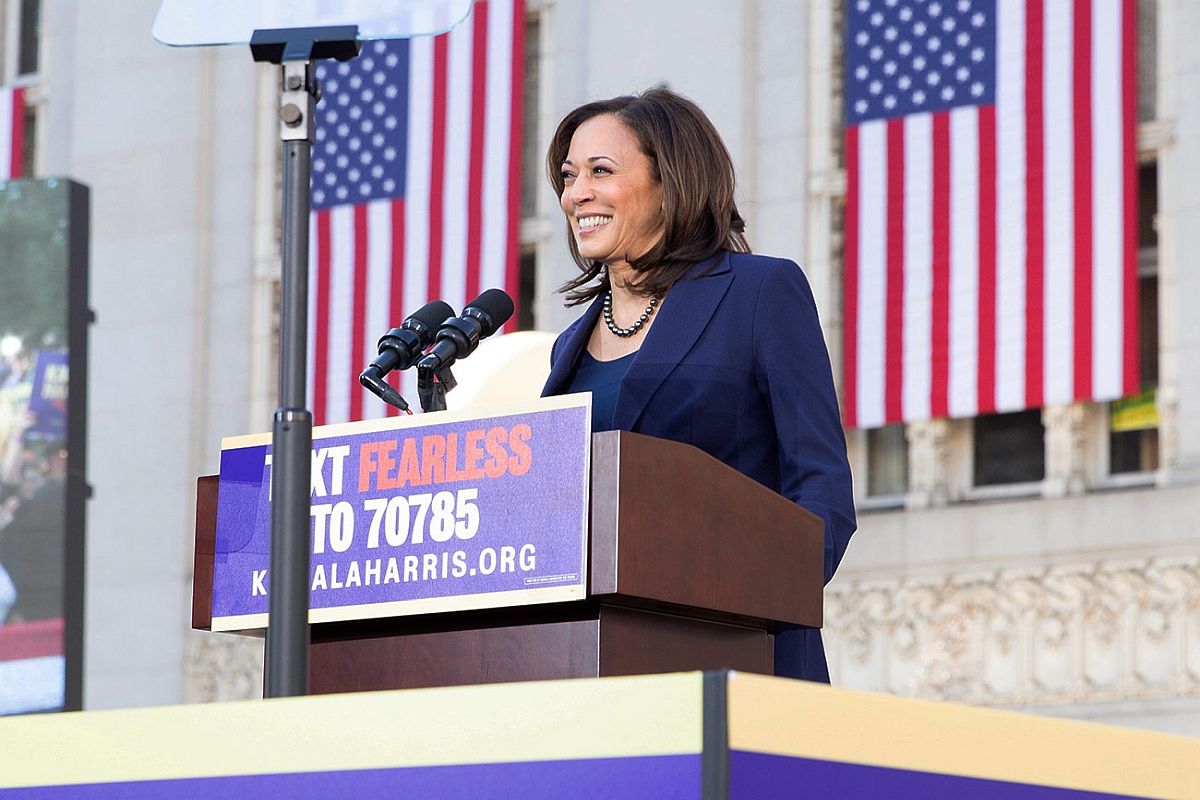PM spells out India’s position on China
I n a recent interview to Newsweek, the Prime Minister, discussing Indo-China relations, commented, “For India, the relationship with China is important and significant.
Vice-President Kamala Harris’ visit to the Philippines may well have restored some equilibrium to the relationship between the two countries, after the stormy Duterte years which saw the former Filipino president apparently tilt towards China after announcing his “independence” from the United States.

Kamala Harris (File Photo: IANS)
Vice-President Kamala Harris’ visit to the Philippines may well have restored some equilibrium to the relationship between the two countries, after the stormy Duterte years which saw the former Filipino president apparently tilt towards China after announcing his “independence” from the United States.
Indeed, Mrs. Harris was quite forthright in declaring, “An armed attack on the Philippines’ armed forces, public vessels or aircraft in the South China Sea would invoke the US’ mutual defence commitments ~ and that is an unwavering commitment that we have in the Philippines.”
And President Ferdinand Marcos Jr. was nearly as effusive in telling his guest, “I do not see a future for the Philippines that does not include the United States.” Coinciding with the visit, there were reports of a blast and a maritime encounter between the Philippine Navy and China’s Coast Guard.
Advertisement
While both nations sought to downplay the incident, residents of the Philippines occupied Thitu island, said the blasts came from Subi Reef, one of the biggest artificial islands built by the Chinese in the disputed Spratlys. These reports said that a Chinese Coast Guard vessel forcibly blocked a Philippine naval boat and snatched rocket debris gathered by the Filipinos by severing a towline.
The Chinese were quick to dismiss suggestions of a naval altercation and said the debris had been returned after “friendly consultation”. But the incident can only serve to underline the seriousness of the dispute between the two countries, which had been taken by the Philippines to an international tribunal that in 2016 struck down Beijing’s exaggerated claims over the South China Sea.
It would seem to suggest that the Chinese are conducting military drills in the Spratlys, ignoring international law, and are prepared to use strong-arm tactics to get their way. The United States and the Philippines have had historically close ties. The Philippines was an American colony from 1898 to 1946.
The islands were occupied by Japan from 1941 to 1945, before a campaign launched by the Americans under General Douglas McArthur saw the Japanese surrender in September 1945. The country gained independence from America the following year but has important defence and strategic ties with Washington.
Described often as America’s strongest non-Nato ally, the Philippines is actively working on the implementation of an enhanced defence cooperation agreement formalised in 2014 that allows the US military to construct facilities at five bases. While some Filipino activists oppose the presence of American bases, an overwhelming majority of Filipinos have voted consistently to say they admire America and cherish the ties between the two countries. Ms. Harris’ visit was important, therefore, to reinforce these ties and to send a signal to Beijing that any attempt to change the status quo would be countered.
Advertisement